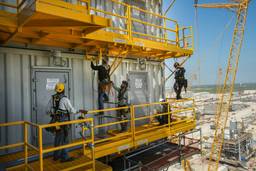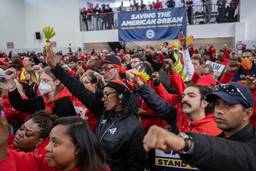We are going to play a little card trick, so I will need your total attention.
Hands off the mouse. Lift your fingers off the keyboard. Give them a rest. Don’t worry, we’ll get around to workers and the economy in a second.
Now, I’ve spread three cards out in front of you. Pick the right card and bingo, you will know not only when companies will start hiring again, but just how many workers will get the nod.
Got your attention, didn’t I?
You’ve heard the news reports in the last few days talking about the recession being over, that some factories are cranking up again. You are just itching for more good news.
So, back to the cards. Nope, that wasn’t it. That wasn’t it either. Last card. What do you think? Are the numbers there? Okay, let’s see. Not there either.
That’s the trick to the game and our evolving, job-devouring economy.
In terms of jobs, the U.S. economy is dramatically different today than a year ago when it began to take a dive, different from six years ago when there were few jobs after an economic downtown, and very different from the 1990s, when the term “jobless recovery” became popular.
The difference is that we are living on the edge of what will truly become a cruel recovery. If most analysts are correct, high unemployment will linger for several years, and real waves of hiring will remain way off in the future for some time to come.
Why will this recovery be different than other recent recession recoveries?
First, there is hardly any money bouncing around in consumers’ pockets. You know the reasons: the collapse of the stock market, the hollowing out of employees’ savings accounts, the shrinkage in home values and explosion of debt.
Since consumers have less to spend, and those who do have money are hanging on to it with tight fists, businesses will limp along. And this will serve as a major impediment to companies’ ability to hire for some time to come.
But the major differences are the changes that have taken place for many U.S. workplaces. They come in two varieties.
The most pernicious one is the disappearance of thousands of jobs in industries that businesses have deemed no longer competitive in the United States. For a long time, only blue-collar jobs disappeared to low-cost countries. But the loss has extended to service jobs.
Still, the unending flight of better paying factory jobs, and the downward shift in wages and benefits for those left behind on factory floors, has been a crippling loss for workers nationally, and a devastating one for the blue-collar-dominated Midwest.
And that leads to a more ubiquitous change that has grown steadily for the last two decades. This is the inclination by employers to steadily cut back their workforces and to add overtime or to hire temporary workers in business spurts.
That’s what makes this card trick so effective.
Most players think they have seen everything, and so think they know what’s coming. But they’ve never seen a jobless recovery like this one before.
A former labor writer for the Chicago Tribune, Stephen Franklin is a Pulitzer Prize finalist and an adjunct professor at the University of Illinois Urbana-Champaign School of Labor and Employment Relations.







